This month the Italian Food Wine and Travel (#ItalianFWT) group is diving into Italian reds and whites—or in my case, a rosato! Our exploration is hosted Cam of Culinary Cam, and you can find her invitation post here.
Recently, I had the chance to join a fascinating webinar introducing Kellerei Bozen, a prominent cooperative winery in Alto Adige, northern Italy. The session was hosted by Italian wine expert Susannah Gold of Vigneto Communications and and featured Matthias Messner, Director of Kellerei Bozen, who brought the story of this historic cooperative and its remarkable alpine terroir to life.
Alto Adige
Italy’s northernmost wine region, Alto Adige, sits at the cultural crossroads of Italy, Austria, and Switzerland. With its dramatic Alpine landscapes and a blend of Germanic and Italian influences, this region feels as international as it does uniquely Italian. German is spoken by 70% of the population, and the food, wine, and architecture reflect a centuries-long intermingling of cultures.
Fun facts about Alto Adige(1)
- Grapes have been grown here for almost 2,500 years.
- There are 14,300 acres (5,850 ha) of vineyards with over 200 wineries and 4,800 growers.
- Alto Adige DOC has 6 sub-regions.
- 70% of production is by cooperative wine cellars (a very high percentage!).
- Alto Adige has the highest concentration of Michelin Stars in all of Italy in relation to its population.
- 98% of all production is DOC wine – the highest in Italy!
- 65% of Alto Adige wine is white wine.
Terroir
What makes Alto Adige’s wines so distinctive is its dynamic climate and dramatic geography. The towering Dolomites shield the region from the cold, wet air descending from the north, while warm, moisture-laden breezes drift up from Lake Garda and the Mediterranean. This interplay creates ideal conditions: sunny days, cool alpine nights, strong winds, and warm soils—elements that help preserve the vibrant acidity and aromatic intensity of Alto Adige’s wines.
The region’s diverse soil types—from volcanic porphyry to gravel and limestone—combined with vineyard elevations ranging from 200 to 1,000 meters, support the successful cultivation of 20 different grape varieties. This diversity is part of what makes exploring wines from Alto Adige such a compelling experience.
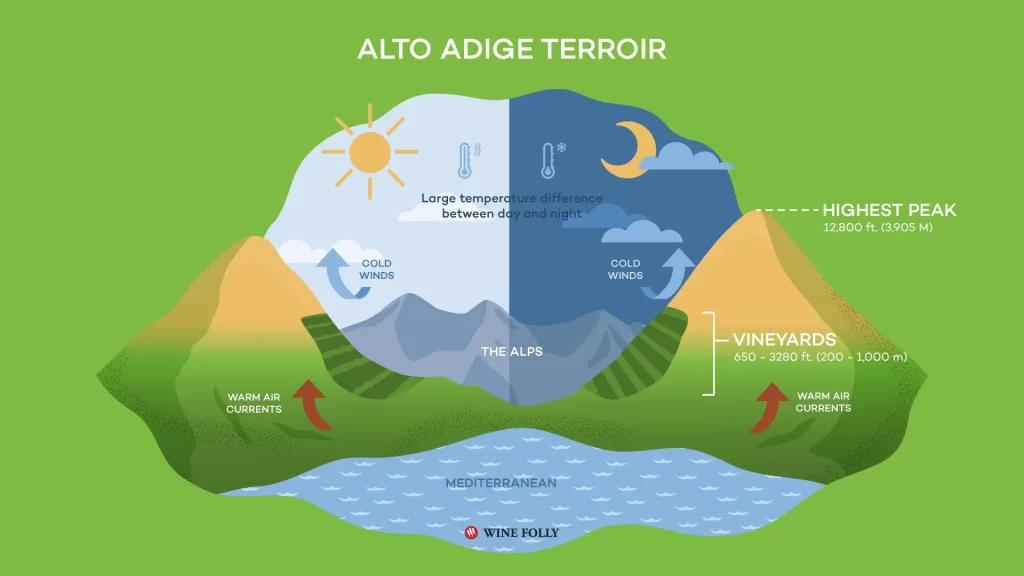
Kellerei Bozen
The story of Kellerei Bozen is one of courage, collaboration, and enduring community spirit.
It all began in 1908, when 30 determined vine-growers from the Gries district united to form a cooperative. Their shared goal was simple yet ambitious: to vinify and sell their wines—especially Lagrein—in its traditional forms: Lagrein Kretzer (rosato) and Lagrein Dunkel (dark red).
In 1930, another group of 18 growers from nearby St. Maddalena established their own cooperative. Their timing, however, couldn’t have been more challenging. The world was in the grips of a global economic crisis, and South Tyrol’s German-speaking residents faced increasing repression under Mussolini’s fascist regime.
Then came World War II. Allied bombings damaged the St. Maddalena winery near Bolzano’s railway station, forcing the growers to choose: walk away from their vineyards or join forces in the spirit of survival. In 1944 and 1945, the two cooperatives began producing wine together at the Gries facility—a collaboration born of necessity that laid the foundation for something lasting.
That partnership blossomed into an official merger in 2001. And in 2015, the cooperative took another leap forward, consolidating its operations into a striking new winery in the San Maurizio district on the outskirts of Bolzano.
Completed in 2018, the modern, gravity-flow facility is topped by a single striking structure: a prism-shaped building that, thanks to dramatic lighting, resembles a vine leaf. It’s beautifully integrated into the surrounding hillside, blending modern design with the natural landscape.
Today, Kellerei Bozen represents 224 member-growers and 350 hectares of vineyards. Their production is equally divided between red and white wine.
Wines Tasted
Tasting Notes: Exploring Kellerei Bozen’s Alpine Reds
Disclosure: Wines were provided as a media samples. No other compensation was received. All opinions are mine.
2023 Kellerei Bozen / Cantina Bolzano Blauburgunder Pinot Nero
Pinot Nero (a.k.a Pinot Noir or Blauburgunder in German) has been a staple of Alto Adige’s vineyards since the early 20th century. The grapes for this wine are carefully cultivated from high-elevation sites ranging between 1,600 to 2,500 feet (~500–750m), where the cool mountain climate and sunny slopes help create a harmonious, food-friendly and delicious wine.
Translucent ruby color with enticing red cherry, strawberry, raspberry, damp earthy, hibiscus and spice aromas. On the palate, its pale hue is deceptive, as it carries a surprising medium-bodied weight with bright, mouthwatering acidity and silky tannins with ripe red fruit flavors of raspberry, black cherry, strawberry, rooibos tea, spice and hibiscus underscored with an earthy undertone. Medium finish 100% Pinot Nero. 13% abv| SRP -$25 (89 pts.).
2023 Kellerei Bozen / Cantina Bolzano St. Magdalener Classico Huck am Bach
This wine captures the spirit of Alto Adige’s classic everyday red—approachable, food-friendly, and full of local charm.
Pale ruby color with strawberry, raspberry, violets, white pepper and tobacco leaf aromas On the palate, it’s medium-bodied with good acidity and velvety tannins with strawberry candy, raspberry, black cherry, marzipan and subtle spice flavors with a savory peppery and bitter almond undertone. A lively blend of 90% Schiava and 10% Lagrein, both native to Alto Adige. 13% abv| SRP – $22 (88 pts.) This wine is emblematic a traditional every day red wine of the region.
2022 Kellerei Bozen / Cantina Bolzano Lagrein Perl
Lagrein (pronounced lah-GRYNE) is a red grape variety that is native to the Alto Adige. It is one of the oldest and most distinctive indigenous grape varieties of the area, with evidence of its cultivation dating back to the 16th century. It is a cross between Teroldego and Schiava.
Deep ruby color with ripe black cherry, black currant, violets, vanilla, cedarwood, and smoke aromas. On the palate, it’s medium-bodied with good acidity and chalky, well integrated tannins with ripe black cherry, black currant, rooibos tea, spice and vanilla flavors. 100% Lagrein. 13.5% abv| SRP – $28-30 (90 pts.)
2022 Kellerei Bozen / Cantina Bolzano Lagrein Alto Adige – Südtirol Riserva Taber
This is Kellerei Bozen’s premium wine. Fruit for this wine sourced from low-yielding 80 year-old vines in the Greis area. Raised in large oak barrels, this is an age-worthy wine that has the potential to improve for the next 10-15 years. It is Alto Adige’s most awarded wine.
Deep ruby color with black cherry, black currant, cedarwood, violet, cacao and subtle smoke aromas. On the palate, it’s medium-bodied with bright acidity and velvety well-integrated tannins with ripe black cherry, black currant, violet dark chocolate, vanilla and subtle spice flavors. Long finish. 100% Lagrein. 14% abv| SRP – $80 (92 pts.)
Food Pairings: Bringing the Wines to the Table
Wine is made to be enjoyed, and for me, pairing it with food is one of the greatest pleasures. After tasting these wines, I was eager to bring them to the table—and the results were nothing short of delicious.
Pairing 1: Filipino Chicken Menudo + Alpine Reds
We kicked things off with a cross-cultural pairing: Filipino Chicken Menudo with two Alto Adige reds—the 2023 Kellerei Bozen Pinot Nero and the St. Magdalener Classico Huck am Bach.
If you’ve never had Filipino Chicken Menudo, you’re in for a treat. This hearty stew is pure comfort—tender chicken, potatoes, carrots, and bell peppers simmered in a rich, savory tomato sauce. We added chicken livers to our version, which deepened the flavor and added a touch of umami magic.
That’s exactly why I reached for these two red wines from Alto Adige. With their savory undertones, bright acidity, and firm structure, they didn’t just stand up to the dish—they elevated it. Each sip cut through the richness, while echoing the earthy, meaty notes of the livers in the most delicious way.
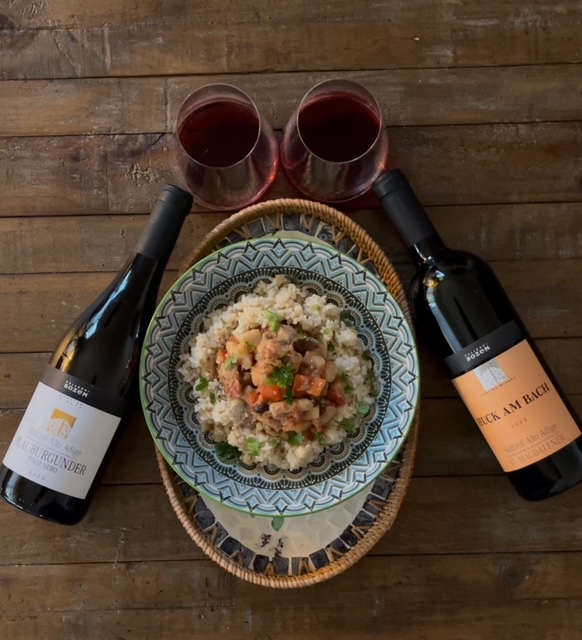
Pairing 2: Mafaldine with Short Rib & Onion Ragu + 2022 Perl
Next came a more classic Italian pairing: takeout from a local favorite, Guantonio’s—Mafaldine pasta with short rib and caramelized onion ragù—paired with the 2022 Perl. The wine’s firm tannins and bright acidity cut through the richness of the ragù, elevating every bite in a truly outstanding match.”
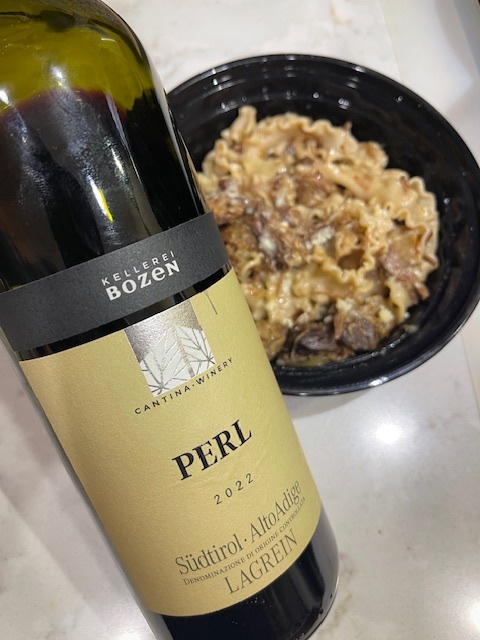
Pairing 3: Braised Lamb Gnocchi and Mo + 2022 Taber
Finally, we paired the 2022 Taber with two takeout favorites from Guantonio’s: mortadella pizza and potato gnocchi with braised lamb, artichokes, green garlic, fennel, and pecorino. While the wine complemented the pizza nicely, it was the pairing with the gnocchi that truly shined—a match made in heaven!
Bonus Pairing – 2021 Heinrich Mayr Südtirol Kretzer
These four Alpine reds from Kellerei Bozen offer a compelling look at the region’s range — from bright, fruit-driven elegance to more structured, complex and hearty wines.
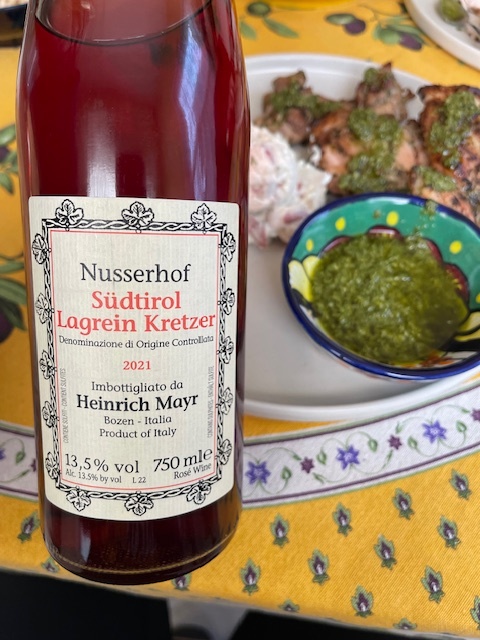
During the Kellerei Bozen webinar, I was also introduced to a new-to-me distinctive regional specialty: Alto Adige’s Kretzer rosato wines. Described as rosés that drink more like light-bodied reds, I was instantly intrigued. I tracked down a bottle — the 2021 Heinrich Mayr Südtirol Kretzer — and it did not disappoint. Medium-bodied, refreshing and imbued with Alpine character, it made for a delicious counterpoint to the reds. You can read more about that tasting and pairing here.
My Takeaways
These Alpine reds from Kellerei Bozen offer a compelling snapshot of Alto Adige’s diversity — from the bright, silky charm of Pinot Nero, to the savory complexity of St. Magdalener Classico, and the deeper structure of wines like Perl and Taber. Each bottle reflects the region’s unique terroir, high-altitude vineyards, and the cooperative spirit at the heart of Kellerei Bozen.
And, if you haven’t yet discovered the charm of an Alto Adige Kretzer rosato, consider this your nudge—find a bottle and prepare to be delighted!
Alpine reds are as diverse and fascinating as the people who write about them. Below, you’ll find links to other insightful pieces from the #ItalianFWT crew—each one offering a fresh perspective on the Alpine wines of Alto Adige:
- Alto Adige Red Wines Paired with Sierra Nevada Adventures and Cabin-Cooked Meals by Culinary Cam
- Alto Adige Wine Pairings by Cooking Chat
- Bolzano and the Alto Adige Wines of Kellerei Bozen by Crushed Grape Chronicles
- From a Country of Contrasts: Pinot Noir, Schiava, Lagrein at Alto Adige’s Cantina di Bolzano plus a Menu for Alpine Wines by Wine predator…Gwendolyn Alley
- Head northeast for juicy Italian reds by My Full Wine Glass
- Italian Red Wines from Trentino-Alto Adige with Kellerei Bolzano by Vino Travels
- Italian Wines at Altitude by Avvinare
- Two Italian Dinners, Two Wines from the Italian Alps, and a Book Review by A Day in the Life on the Farm
- Uncorking the Italian Alps: A Journey Through Santa Margherita Pinot Grigio and Exquisite Alp Whites by Our Good Life
Sources and resources:
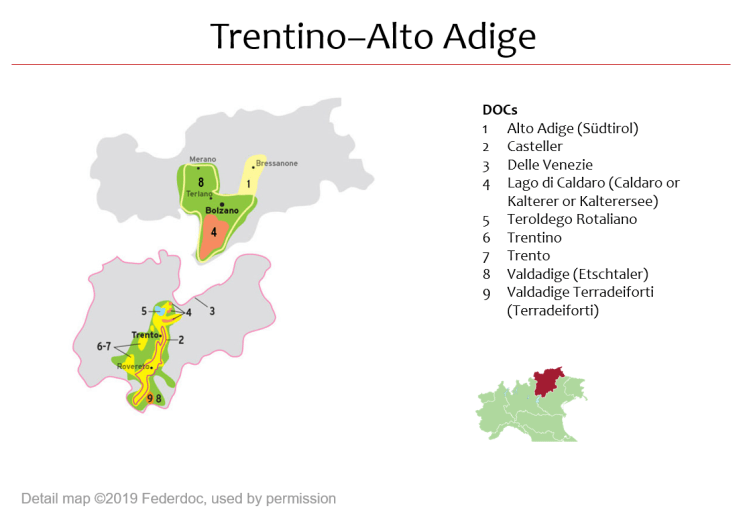
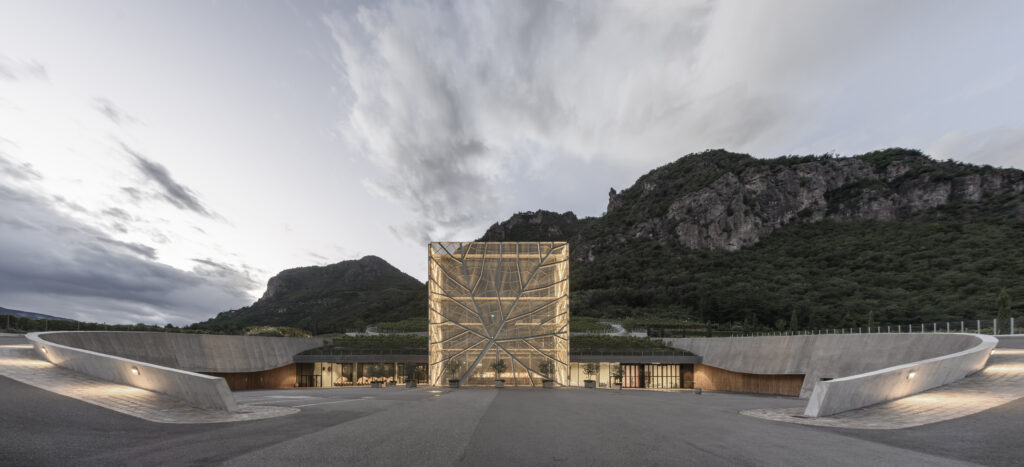
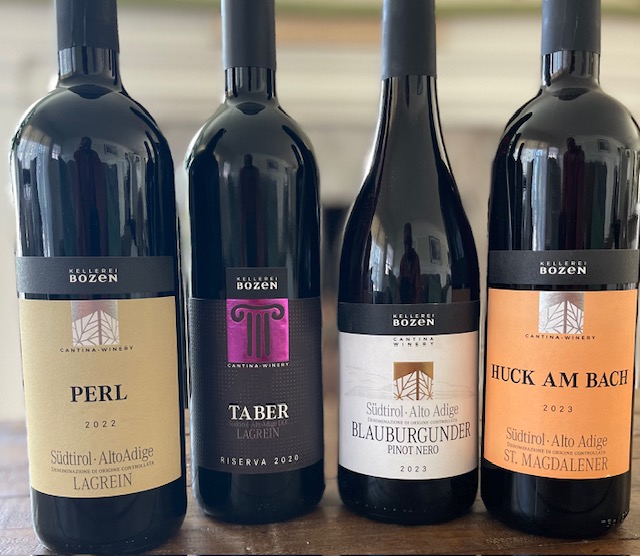
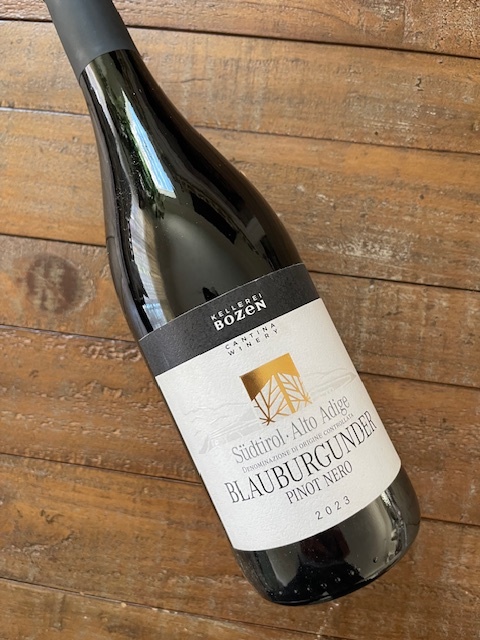
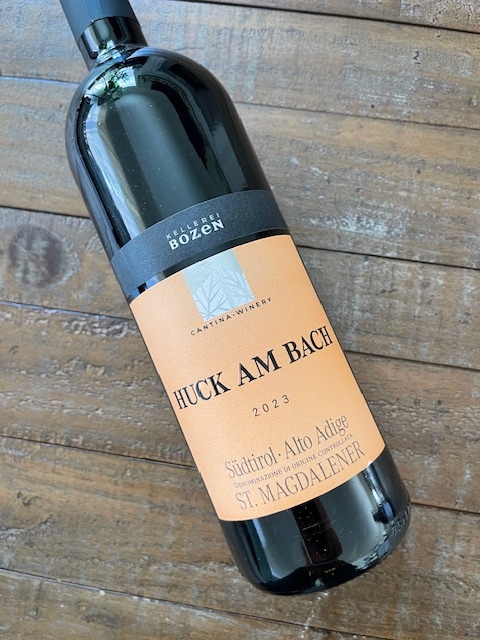

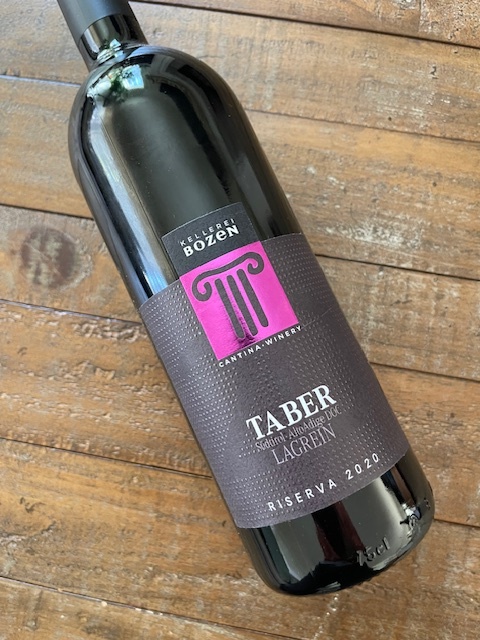
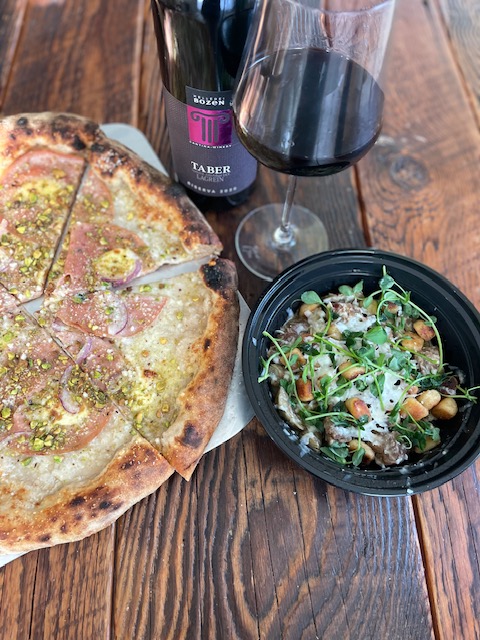
I am completely hooked on these wines and now I want to be able to try them with the range of dishes you did! (Man you have great take-out places near you!) I’m also day dreaming of a trip to that stunning winery!
As always, Martin, your pairings look amazing. I never pair Filipino food with any wines. I will have to remedy that soon.
Wow, how lucky you were to have so many wines to pair and I love the meals you chose to pair them with. I need to stop by your house for dinner and wine education.
I stuck with a traditional white, now I want to dive into the reds. I saw a couple of wines that showed up in a few posts and so I am gong to seek those out first. Short rib is a personal favorite, so that is where I am starting!
These pairings sound wonderful! The chicken dish sounds interesting.